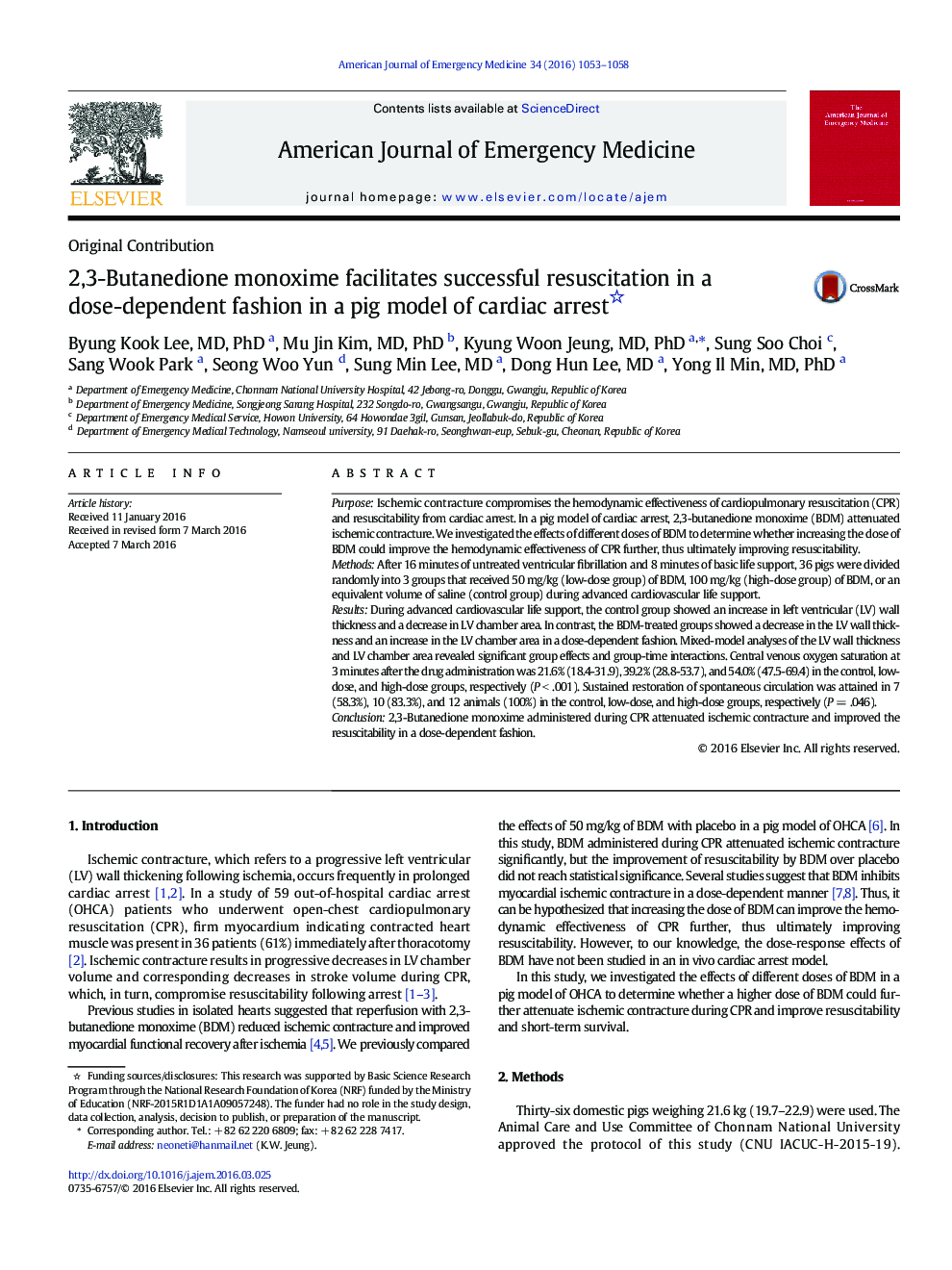| کد مقاله | کد نشریه | سال انتشار | مقاله انگلیسی | نسخه تمام متن |
|---|---|---|---|---|
| 3223123 | 1588093 | 2016 | 6 صفحه PDF | دانلود رایگان |
PurposeIschemic contracture compromises the hemodynamic effectiveness of cardiopulmonary resuscitation (CPR) and resuscitability from cardiac arrest. In a pig model of cardiac arrest, 2,3-butanedione monoxime (BDM) attenuated ischemic contracture. We investigated the effects of different doses of BDM to determine whether increasing the dose of BDM could improve the hemodynamic effectiveness of CPR further, thus ultimately improving resuscitability.MethodsAfter 16 minutes of untreated ventricular fibrillation and 8 minutes of basic life support, 36 pigs were divided randomly into 3 groups that received 50 mg/kg (low-dose group) of BDM, 100 mg/kg (high-dose group) of BDM, or an equivalent volume of saline (control group) during advanced cardiovascular life support.ResultsDuring advanced cardiovascular life support, the control group showed an increase in left ventricular (LV) wall thickness and a decrease in LV chamber area. In contrast, the BDM-treated groups showed a decrease in the LV wall thickness and an increase in the LV chamber area in a dose-dependent fashion. Mixed-model analyses of the LV wall thickness and LV chamber area revealed significant group effects and group-time interactions. Central venous oxygen saturation at 3 minutes after the drug administration was 21.6% (18.4-31.9), 39.2% (28.8-53.7), and 54.0% (47.5-69.4) in the control, low-dose, and high-dose groups, respectively (P < .001). Sustained restoration of spontaneous circulation was attained in 7 (58.3%), 10 (83.3%), and 12 animals (100%) in the control, low-dose, and high-dose groups, respectively (P = .046).Conclusion2,3-Butanedione monoxime administered during CPR attenuated ischemic contracture and improved the resuscitability in a dose-dependent fashion.
Journal: The American Journal of Emergency Medicine - Volume 34, Issue 6, June 2016, Pages 1053–1058
